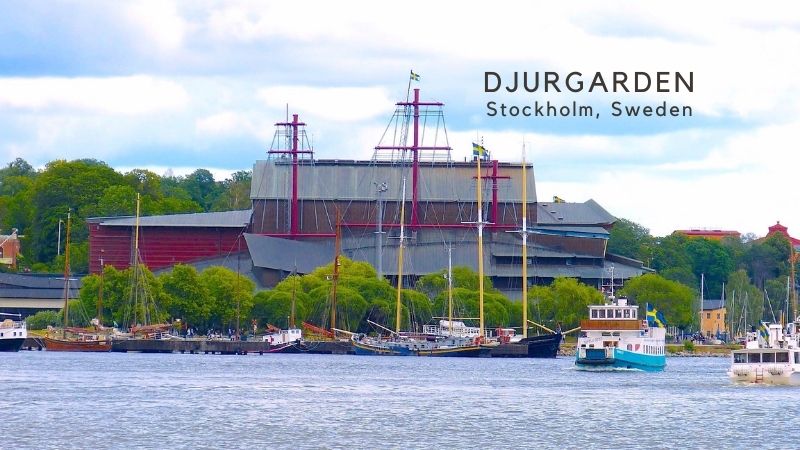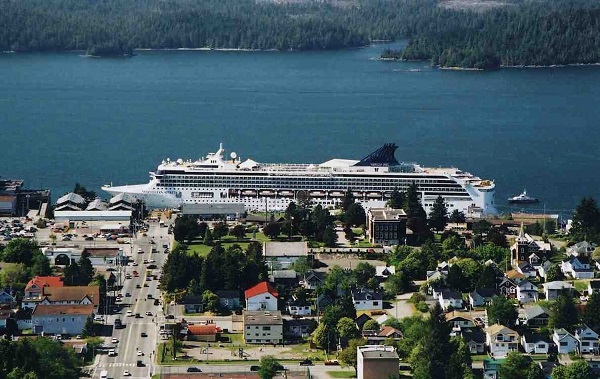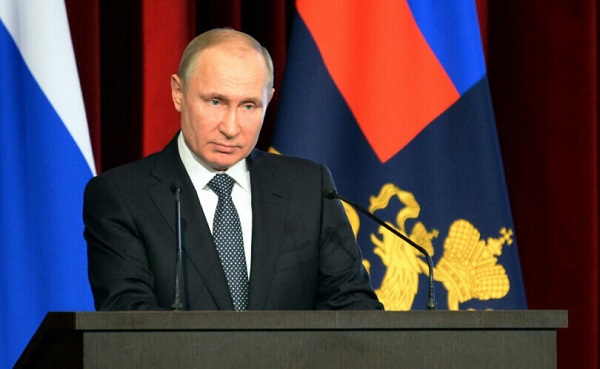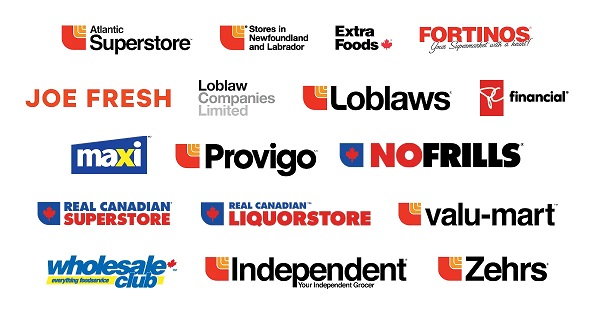Alberta
My European Favourites – Stockholm – Djurgården

If there was one city in northern Europe that I could easily live in, I think it would be Stockholm.
The Swedish capital has over two million inhabitants and over 50 bridges connecting its fourteen islands. The city often ranks highly on the global “quality of life index” and has over one hundred museums, plus a lively culinary, theatre, music and sports scene.

Gamla Stan’s Stortorget Square, narrow streets and the Royal Palace.
If you enjoy boating, sailing and watersports, Stockholm has Lake Mälaren with more than 1,000 islands to the west. To the east of the city centre, the Saltsjön (Salt Bay) has a lengthy and picturesque archipelago with over 30,000 islands leading all the way to the Baltic Sea. With so many cottages and activities on these islands, they are a perfect getaway from the city hustle and bustle.
Stockholm’s old city centre is on the island of Gamla Stan. The area is full of colorful houses from the 17th and 18th centuries and narrow cobblestoned streets with interesting shops, cafes, pubs and bars. The Royal Palace, official residence of the Swedish monarch, can be toured and the popular changing of the guard is accompanied by a military band in the summer months.

Stockholm aerial view, Stockholm’s city hall and Swedish crown on Skeppsholmsbron Bridge.
Royal Djurgården
Stockholmers enjoy a vast green space right in their city center on the island of Djurgården. The island is Scandinavia’s number one tourist attraction and a favourite for nature lovers, walkers, runners, hikers and cyclists. In addition to being loved for its green spaces, it is famous for having four royal palaces, popular museums, cafes, restaurants and a large amusement park.
The history of Royal Djurgården goes back to 1452 when King Karl Knutsson purchased the southern part of the island. It was a royal hunting ground for many years and over time was opened to the public and expanded.
In 1995, King Carl Gustaf XVI officially opened the world’s first national city park comprising the Ulriksdal, Haga, Brunnsviken and Djurgården districts. The 27 square kilometer park is eight times the size of New York’s Central Park.
On Djurgården, you can see over one hundred bird species and eight hundred varieties of flowering plants. You can easily spend a few days in Stockholm just visiting Djurgården. Here are my favourite things to do on the island.

Djurgården Visitor Center and rental shop on the left from the Djurgårdsbron bridge.
When you enter Djurgården from the west on the Djurgårdsbron bridge, you will find the Royal Djurgården Visitor Center. The center rents bikes to explore the island, and there is a ten to twelve kilometer path that goes around the island. They also have kayaks, canoes or pedal boats. If you want to paddle all the way around the island, expect it to take about two to three hours.
The Sjöcaféet café is located by the visitor’s center and has a nice outdoor terrace overlooking the water. They have a reasonably priced menu with a variety of Swedish dishes plus they make a nice pizza. If you want a quick bite you may want to try the Korv sausage stand for a hot dog or their ice cream stand.

The bow of the Vasa ship at the museum entrance, the ship’s starboard side and a model.
Vasa Museum
From the visitors’ center, the Vasa ship museum is easy to spot. It’s located right behind the imposing Nordiska Museum and the roof of the museum has a copper roof with ship’s masts coming through it. The masts depict the actual height of the Vasa when it was in the harbour over 300 years ago.
King Gustavus Adolphus ordered the massive warship built in 1626 during a wartime period against Poland-Lithuania. To match the kings’ prestige, power and ambitions, the ship was extravagantly decorated and armed with 64 cannons on two gundecks. The immense Vasa must have been a stunning sight with all the bronze cannons, ornate carvings, painted sculptures, large masts, sails set and flags flying. The problem, which was discovered during construction, was that she was unstable and top heavy.
Despite this knowledge, on the afternoon of August 10, 1628, the Vasa set sail from the quay in the Old Town. She sailed a few hundred meters, then a squall, or sudden gust of wind, forced the Vasa to list heavily to one side, but she returned upright. Moments later, a second squall listed the boat so heavily that water started to pour in through the gunports. As the water seeped into the ship, it was too much to recover from; the Vasa capsized and sunk. About 30 of the crew and passengers drowned in the incident. The sinking of the Vasa in Stockholm’s harbour on her maiden voyage must have been quite shocking for the thousands of spectators who lined the sea front for a glimpse of the new ship.

A cross section of the Vasa interior, a bronze cannon and colorful figures from the stern.
Shortly after it sunk, efforts were made to retrieve the valuable bronze cannons, and over 50 were recovered. As the years passed, a few unsuccessful salvage attempts were made but eventually the exact location of the wreck was lost. Amateur archaeologist Andres Franzen, after many years of searching, found it again in 1956. Plans were made and the Vasa was finally raised to the surface in 1961 after laying in the “Salt Sea” for 333 years.
For over 20 years, the ship was housed in a temporary structure while it underwent examination and treatment to preserve it. In the early 1980’s, the Swedish government decided to build a permanent museum and numerous architects submitted designs. A final design was chosen, and the Vasa Museum opened in 1990, displaying the almost intact 17th century warship. It is the most visited museum in Scandinavia with around 1.5 million visitors per year.
When you walk in to the museum, the sight of the ship is overwhelming. The ship can be seen from six different levels and there are exhibits, maps and models explaining how the ship was built, it’s sailing route and eventual sinking. The museum explains the situation in Sweden during the 17th century that required the Vasa ship to be built, and has a movie theatre with a film on the ship recovery.
The Vasa museum is an absolute must if you are in Stockholm for any length of time.

The Renaissance Nordiska Museum, the central hall and the statue of King Gustav Vasa.
Nordiska Museum
As you emerge from the Vasa Museum, you will face the back of an impressive stone building, the Nordiska Museum. It stands on an area called Lejonslätten, the lions plain, because Queen Kristina, daughter of King Gustavus who had the Vasa ship built, placed lions here during her reign in the 17th century. The Renaissance style building which was partially built for Stockholm’s World´s Expo in 1897 is the home of Sweden’s largest cultural and historical museum.

Elaborate furniture, a 13th century baptismal font, toy cars and a warrior’s iron breastplate.
The Nordiska museum was founded in 1873 by Artur Hazelius, who also founded the nearby Skansen open air museum. When you enter the museum, you will see a large oak statue of King Gustav Vasa placed in the centre of an over 100 meter long open central hall with a ceiling that rises 24 meters. As you look up, you will see multiple stories surrounding the central hall.
The museum has over a million objects depicting the Nordic lifestyle and traditions from the 16th century to today. The collections of art, furniture, jewelry, fashion, glass, porcelain and interiors are interesting. The museum also has an area dedicated to the Sami, the only indigenous people in Sweden.

Wax figures of ABBA, caricature dolls of the iconic group and a display of records and CDs.
ABBA Museum
If you follow the main road in front of the Nordiska Museum, the Djurgårdsvågen, for about 300 meters, you will reach the entrance to the ABBA Museum. The Swedish pop group is known the world over, and their band’s name is an acronym taken from the first letters in the band members first names, Agnetha Fältskog, Björn Ulvaeus, Benny Andersson, and Anni-Frid Lyngstad. They rose to fame in 1974 after winning the annual Eurovision Song Contest with the hit song ‘Waterloo.”
ABBA sold hundreds of millions of records worldwide during the 1970s and 1980s and were inducted into the Rock and Roll Hall of Fame in 2010. In 1999, the musical “Mama Mia!,” which adapted ABBA’s music, became a smash hit along with subsequent related films.
The ABBA Museum opened in 2013 and at the entrance you will get an audio tour device that is easy to use on the self guided tour. As you go through the museum, you just tap the audio pad, and the audio begins. Much of the audio is actually the band members telling stories of their lives before ABBA, how they met, how they wrote songs, how they became the iconic super group and some of the experiences they had along the way. There are interactive areas where you can sing their music or dance with them on stage.
The exhibits are well done including a recreation of the Polar Studio, where they recorded some of their music. There is a helicopter similar to the one used in the album cover ABBA ARRIVAL that you can sit in to recreate the photo. In the museum you will see gold records, archival film footage, interesting stage costumes and the caricature style ABBA dolls that were used in a music video called “The Last Video.”
Before you leave, you enter the giftshop where you can get everything ABBA from souvenirs to posters, apparel and CDs. We all have listened or danced to ABBA songs over the years, and although I’m not a huge fan, the museum was very enjoyable.

Grona Lund from the water, the carousel, the Eclipse swings and the roller coasters.
Grona Lund
When you leave the ABBA Museum, you can’t miss the sounds of the nearby Amusement Park.
In the late 1880s, on the south shore of Djurgården, nine acres were approved for the building of an amusement park. The park’s design had to incorporate the existing houses and commercial buildings that were already on the property. Even though the park has a small footprint on the island, it has 30 different attractions including roller coasters, free fall rides, and the “Eclipse,” one of the world’s tallest swing rides. The “Insane” roller coaster lives up to its name as the cars flip and spin and you travel along. In addition to the rides for the thrill seekers, there are rides for young children, and carnival games where you can win prizes like huge chocolate bars.
Grona Lund often hosts rock and pop music concerts, including on the main stage in the middle of the park. Bob Marley performed at Grona Lund three times, including in 1980 when he drew 30,000 fans.
If you want a quick bite, there are about fifteen food stands offering a wide selection of items including candy, burgers, pizza, poke bowls, kebabs, gyros, churros, waffles, crepes and ice cream. If you prefer to sit and relax, there are over ten options including Mexican, BBQ and Asian restaurants and a Biergarten. Needless to say, you won’t go hungry here.
The park is open from spring to late September and may be open during other dates including Halloween and the Swedish Autumn break. You can buy your tickets online in advance and get a pass that includes unlimited rides.
We have taken many youth hockey and ringette teams to Stockholm, and Grona Lund is always a hit with the kids and parents.

A traditional house in Skansen, a glass blowing shop, farm buildings and a school room.
Skansen
If you are not into amusement parks, across the street from the Grona Lund is the slower paced Skansen open-air museum. In the late 1890s, the park was created to preserve traditions, customs and structures from different parts of Sweden prior to the industrial age. The park is much larger that Grona Lund, with over 75 acres, and it attracts over a million visitors per year.
Over 150 buildings were relocated to Skansen from throughout Sweden, and they range from simple farm structures to worskhops, school rooms and manor houses. As you walk through the small village that they have created, people in traditional dress are doing every day chores. If you enter the trade shops, you will see skilled craftsmen demonstrating their skills including bakers, tanners, silversmiths, shoemakers and glass blowers. In today’s world, we take many essential products for granted that used to be made by hand in these small community work shops. To experience 19th century transportation, a 200 meter long funicular railway has been transporting people 35 meters up the north side of the Skansen hill since 1897.
Skansen’s traditional Christmas market, festivals and folklore shows are very popular.
Skansen’s relocated farms include domesticated animals like goats, pigs and horses. The park zoo contains over 75 species of the Nordic animals including bison, bears, seals, otters and moose. In addition to these Scandinavian natives, the zoo also features non-traditional animals like monkeys, peacocks, elephants and more.
Like Grona Lund, there are numerous options for fast food, cafes and restaurants. Taking time for a “fika” is an important Swedish custom. A fika is an opportunity to take time to share a coffee, and a little bite or a pastry, usually a cinnamon bun, with friends, colleagues or family.
A walk around the Skansen open-air museum on a nice sunny day is a great family activity.

Traditional farm houses, the funicular railway, the Bredablick tower and a moose.
More things to see and do in Djurgården
There are so many things to do in Djurgården. I listed some of my favourites, but you may enjoy visiting some of these options depending on your interests.
The Viking Museum opened in 2017 and it includes the interesting Ragnfrid’s Saga Viking ride.
The Liljevalchs Konsthall is an art gallery and exhibition space opened in 1916.
The Prince Eugen’s Waldemarsudde art museum is situated on a beautiful waterfront estate with a castle like mansion.
The Spritmuseum & The Absolut Art Collection is devoted to alcohol including Scandinavian Aquavit. After touring the museum, you can order a tasting tray of traditional spirits, Absolut vodkas or ciders.
Featuring 20th century Scandinavian and French art, the Thiel Gallery was established in 1905.
Junibacken is a children’s centre inspired by the stories by the Swedish writer Astrid Lindgren.
Cirkus is a 1,650 person arena built in 1892 that used to hold the circus, but now it is mainly used for shows, concerts, performances, trade shows, meetings, parties and gala dinners.
On the north east of the island, you will find the Djurgården canal. The area across from the canal is Djurgårdsbrunn. Here you will find the Museum of Technology, the Police Museum, the Maritime Museum and more park space.
With so many activities and green space, you can see why Stockholmers love Djurgården. On you next trip to Sweden, be sure to set aside some time on your schedule to explore and enjoy it.
Explore Europe With Us
Azorcan Global Sport, School and Sightseeing Tours have taken thousands to Europe on their custom group tours since 1994. Visit azorcan.net to see all our custom tour possibilities for your group of 26 or more. Individuals can join our “open” signature sport, sightseeing and sport fan tours including our popular Canada hockey fan tours to the World Juniors. At azorcan.net/media you can read our newsletters and listen to our podcasts.
Images compliments of Paul Almeida and Azorcan Tours.
Read more of Paul’s travel series – click here.
Alberta
The Recall Trap: 21 Alberta MLA’s face recall petitions

When Democratic Tools Become Weapons
A Canadian politician once kept his legislative seat while serving time in prison.
Gilles Grégoire, a founding figure in Quebec’s nationalist movement, was convicted in 1983 of multiple counts of sexual assault against minors, mostly girls between the ages of 10 and 14. He inhabited a cell yet remained a member of the National Assembly. A representative of free citizens could no longer walk among them.
Grégoire became the kind of figure who seems made for a recall law. His presence in office after conviction insulted the very notion of a democratic mandate. Yet Quebec lacked recall legislation, and the Assembly chose not to intervene. The episode lingers as a reminder that even robust democracies sometimes fail to protect themselves from rare, glaring contradictions.
Such cases hold powerful sway over the political imagination. They tempt reformers to believe that recall is the cure for democratic injustice, giving it exceptional weight it does not deserve. A constitution shaped by anomalies becomes a constitution shaped by distortion.
We are grateful that you’re enjoying Haultain Research.
For the full experience, and to help us bring you more quality research and commentary, please upgrade your subscription.
Alberta’s own history proves the point, though the lesson has been forgotten. William Aberhart’s rise in 1935 owed more to spiritual magnetism and Depression-era desperation than to prudent reform. He promised Social Credit prosperity through monthly dividends to all citizens. The electorate believed that a new economic order would arrive at a cheerful pace. It did not. Within eighteen months of taking office, Aberhart found himself the target of what he himself had created. His government had passed recall legislation in its first session, fulfilling a campaign promise to democratize Alberta’s government. When the promised dividends failed to materialize, his own constituents in Okotoks-High River began gathering signatures for his removal. The charge was not misconduct but failure to deliver miracles.
Faced with this threat, Aberhart’s government retroactively repealed the recall legislation rather than allow him to be forced from his seat. He thus became the first Canadian politician to institute recall and to be threatened with it. History recorded the episode as a cautionary tale rather than a triumph of democratic vigilance. It showed how easily recall could slip from a tool for integrity to a weapon for frustration, revealing a truth that democratic societies often forget: mechanisms designed for exceptional cases seldom remain limited to them.
Those two stories frame Alberta’s problem today. The province revived recall legislation under Premier Jason Kenney in 2021, with the law taking effect later that year. The measure returned with assurances that high thresholds would prevent misuse. Its defenders claimed recall would restrain arrogance and encourage accountability, offering ordinary Albertans a way to hold politicians accountable between elections. Then, facing discontent within his own party over COVID mandates, Kenney himself became the subject of a different form of recall, a leadership review that undermined his power. Premier Danielle Smith, who succeeded him, amended the recall legislation in July 2025 to make it easier to use. She lowered the signature threshold and extended the collection period, changes that would soon work against her own government.
The result has been quite different from what either leader intended. On October 23, 2025, Alberta approved its first recall petition of the modern era, targeting Education Minister Demetrios Nicolaides in Calgary-Bow. The applicant, Jennifer Yeremiy of a group called AB Resistance, told reporters that their goal was “to put forward enough recalls to trigger an early election.” This was not a response to corruption or criminality. It was an explicit strategy to overturn the results of the 2023 provincial election.
The floodgates opened from there. As of December 10, 2025, twenty-one MLAs face active recall petitions. The list now includes Premier Smith herself, as well as multiple cabinet ministers, backbenchers, and even one NDP opposition member. None confronts allegations of criminality. None confronts evidence of corruption. None resembles Gilles Grégoire. Their adversaries object to education funding decisions, the government’s use of the notwithstanding clause during a teachers’ strike, and various claims of insufficient constituent engagement. These are matters of policy disagreement, not grounds for judicial removal from office.
The principled case for recall legislation deserves some consideration. A democratic society must guard against officeholders whose conduct becomes so egregious that the public cannot wait for the next scheduled election. A mechanism for such removal, carefully designed and narrowly applied, reflects respect for citizenship and the dignity of democratic representation. The theory imagines a vigilant electorate using a sharp tool with care, meeting the rare case with a rare response.
Reality seldom matches this ideal. British Columbia has maintained recall legislation since 1995—thirty years during which not a single MLA has been successfully recalled, despite no shortage of controversial politicians and unpopular decisions. When recall petitions have been attempted there, they have almost exclusively targeted MLAs from close ridings over policy disputes rather than serious misconduct. The pattern is remarkably consistent. Recall becomes a tool for the sore losers of close elections, not a mechanism for removing the genuinely unfit.
This should not surprise us. Most political conflicts involve competing policy visions rather than breaches of trust. Legislators are elected precisely to judge the merits of those visions over a defined term. Elections confer authority because they settle disputes for a time, allowing governments to govern and oppositions to organize for the next contest. A recall mechanism that permits policy quarrels to trigger removal undermines the very purpose of elections. It invites factions to overturn results they dislike through extraordinary means, weakening the equilibrium that representative government tries to protect.
The Aberhart episode illustrates this tendency with clarity. His opponents did not claim he had abused office or engaged in corruption. They claimed he had failed to conjure prosperity, which was entirely true; his promise of monthly dividends proved impossible to deliver. Their frustration stemmed from disappointment rather than betrayal, from unmet expectations rather than broken trust. Yet they seized on the recall mechanism to express that disappointment, nearly removing him on that basis alone. The effort had nothing to do with the integrity of public office and everything to do with the volatility of public expectation during desperate times.
The contemporary Alberta law requires signatures from sixty percent of voters who participated in the last election, collected within 90 days. This appears to be a significant threshold designed to prevent frivolous attempts. The appearance misleads in several ways. First, the threshold is lower than it sounds because it requires sixty percent of actual voters rather than eligible voters—a crucial distinction that substantially reduces the number needed. Second, even petitions that fall short of this threshold can inflict severe political damage. The mere existence of an active recall petition marks an MLA with the taint of public disapproval, regardless of whether the petition succeeds.
The scale and coordination of current efforts reveal something more troubling than isolated expressions of constituent dissatisfaction. A website called Operation Total Recall provides organizational infrastructure for a systematic campaign targeting all 44 MLAs who voted to use the notwithstanding clause during the teachers’ strike. This is not spontaneous grassroots democracy. It is coordinated political warfare using recall as a weapon to overturn electoral outcomes. The effort aims not at removing individual members for cause, but at destabilizing an elected government through mass petitions. Analysis of the 2023 election results shows that five UCP MLAs won by fewer than 1,000 votes, with roughly a dozen more winning by fewer than 2,000. Multiple successful recalls could topple a government with only an 11-seat majority, precisely the outcome the organizers openly seek.
Each successful petition would trigger not just a referendum but also, if that referendum passes, a by-election costing taxpayers between $500,000 and $1 million. This is public money spent not to address disqualifying conduct but to re-litigate policy disagreements that voters already decided in 2023. The financial cost alone should give pause. But the deeper costs run to the foundations of representative government itself.
Prudence counsels caution here. Stable institutions exist precisely to restrain public passions rather than reflect them in every heated moment. Legislators must make decisions that sometimes contradict immediate popular sentiment, particularly when facing complex policy files or managing competing interests across diverse constituencies. A system that keeps them in constant survival mode, forever fighting off recall petitions over unpopular but necessary decisions, cannot foster the kind of judgment that good governance requires. Hayek warned that societies often overestimate their ability to redesign the political order according to the impulses of the moment, mistaking the intensity of feeling for the wisdom of action. Recall legislation embodies exactly this temptation, pretending to offer precise accountability while producing disorder and instability.
The concerns of those organizing these recall campaigns may well be sincere. Many genuinely believe that government policies on education funding or the use of constitutional override powers represent serious failures deserving extraordinary remedy. But sincerity of belief does not make the remedy appropriate. These matters played out during the 2023 election campaign. Voters heard the arguments on both sides. They weighed the competing visions. They made their choices. Those choices produced a government with a mandate to govern according to its platform, which included the education policies and approach to constitutional questions now under attack through recall petitions.
A representative who steals public funds or breaks criminal law betrays the trust voters placed in him. Recall aimed at such behaviour may have genuine merit, providing a necessary safeguard against serious malfeasance. But a representative who supports an unpopular policy does not betray his office—he exercises the judgment he was elected to exercise. That is the political job. Voters who disagree may vote him out at the end of his term. They ought not demand his eviction for legislative disagreement over education funding levels or the appropriate use of constitutional tools in labour disputes.
The shift that recall produces goes beyond individual cases. It fundamentally alters the character of political engagement, moving energy away from long-term relationship building and toward short-term confrontation. Petition campaigns demand signatures rather than solutions. They mobilize resentment rather than reflection. They organize anger rather than deliberation. The timing of the first modern recall petition makes this dynamic clear—it launched during a province-wide teachers’ strike, piggybacking on existing mobilization and emotion. But teachers’ strikes happen. Contract negotiations sometimes get contentious. Should every education minister facing difficult bargaining face recall? Should every healthcare minister dealing with doctors’ disputes become a petition target? This path leads to governance by perpetual crisis, where every unpopular but necessary decision triggers a removal campaign.
The effect on the dignity and effectiveness of public work deserves particular attention. Legislators must confront complex files that rarely offer clearly correct answers. They must choose among imperfect options while balancing competing demands from local constituents and provincial interests. Recall turns these unavoidable difficulties into personal liabilities. Taking a principled but unpopular stand risks triggering a petition. The pressure to remain popular at all times can overwhelm the responsibility to remain principled, inverting the proper relationship between representative and constituency.
If Albertans are genuinely dissatisfied with their government’s direction, a perfectly functional mechanism exists to express that dissatisfaction: the next general election, scheduled for October 2027. That is less than two years away—hardly an eternity in democratic terms. In the meantime, voters retain numerous other tools for making their voices heard. They may contact their MLAs directly, organize politically through parties and interest groups, attend town halls and constituency meetings, and build support for the opposition. These traditional channels require patience and persuasion. They require building actual majority support rather than mobilizing intense minorities. Recall petitions short-circuit this democratic process, allowing well-organized groups to force expensive special votes over disputes that were already litigated during the last election. The NDP opposition, which came close but ultimately fell short in 2023, appears in a hurry to open a back door to reverse its electoral fortune through extraordinary means.
The case of Gilles Grégoire illuminates a genuine weakness in democratic systems—the inability to remove someone whose continued presence in office becomes morally intolerable. This reveals a fundamental flaw. But the solution lies in targeted remedies: clear rules for automatic expulsion upon conviction for serious offences, for instance, rather than a broad recall system that allows every policy grievance to become a removal campaign. Such targeted measures would correct specific defects without inviting the broader turmoil that comprehensive recall legislation produces.
Alberta’s present situation echoes the Aberhart lesson with remarkable fidelity. Recall laws seldom remain tied to their original purpose. They drift toward unintended uses, shifting from instruments of moral accountability to weapons of political agitation. They reward passion rather than judgment at precisely the time when there is already far too much passion and not nearly enough good political judgment. They trade stability for drama and substitute the illusion of democratic empowerment for the reality of weakened institutions that guard freedom.
When Jason Kenney introduced recall legislation in 2021, Alberta had twenty-six years of British Columbia evidence showing how these laws function in practice. That evidence pointed clearly in one direction. Yet the UCP proceeded anyway, and in July 2025, the Smith government made recalls even easier, lowering thresholds and extending signature periods precisely when the government enjoyed a comfortable majority. Now, multiple petitions target UCP cabinet ministers and backbenchers while organizers openly seek to force an early election. The NDP leader’s response captured the irony perfectly: “Hoisted on your own petard.”
A healthy political community requires transparent elections that produce precise results, firm mandates that allow governments to govern, and representatives who can exercise judgment with appropriate stability between electoral contests. It requires citizens who understand that disagreement over policy, much less tit for tat, does not warrant removal. It requires carefully designed safeguards against genuine abuse of office rather than mechanisms that allow temporary frustration to masquerade as a permanent principle. Recall legislation promises a swift cure for democratic ailments while delivering turbulence and rewarding radical impatience.
Democracy depends on accepting election results even when we disagree with them. It depends on waiting for our turn to make our case to voters at the next scheduled opportunity. The recall weapon undermines these basic norms in the service of immediate partisan advantage, encouraging precisely the kind of political mischief that corrodes public trust. This is not democratic vitality expressing itself through new channels. It is democratic exhaustion, the permanent campaign that prevents anyone from governing.
Alberta stands at a point where history speaks with unusual clarity. The Grégoire case shows us the moral outlier who truly deserved immediate removal from office. The Aberhart episode shows us the grave danger of using recall for anything less serious. The voters of this province should draw the correct lesson from both stories. They should protect democracy by resisting the recall illusion—not by eliminating all accountability mechanisms, but by insisting that extraordinary remedies be reserved for truly remarkable circumstances rather than routine policy disputes. That distinction makes all the difference between a legitimate tool and a partisan weapon.
We are grateful that you’re enjoying Haultain Research.
For the full experience, and to help us bring you more quality research and commentary, please upgrade your subscription.
Alberta
Here’s why city hall should save ‘blanket rezoning’ in Calgary

From the Fraser Institute
By Tegan Hill and Austin Thompson
According to Calgarians for Thoughtful Growth (CFTG)—an organization advocating against “blanket rezoning”— housing would be more affordable if the mayor and council restricted what homes can be built in Calgary and where. But that gets the economics backwards.
Blanket rezoning—a 2024 policy that allowed homebuilders to construct duplexes, townhomes and fourplexes in most neighbourhoods—allowed more homebuilding, giving Calgarians more choice, and put downward pressure on prices. Mayor Farkas and several councillors campaigned on repealing blanket rezoning and on December 15 council will debate a motion that could start that process. As Calgarians debate the city’s housing rules, residents should understand the trade-offs involved.
When CFTG claims that blanket rezoning does “nothing” for affordability, it ignores a large body of economic research showing the opposite.
New homes are only built when they can be sold to willing homebuyers for a profit. Restrictions that limit the range of styles and locations for new homes, or that lock denser housing behind a long, costly and uncertain municipal approval process, inevitably eliminate many of these opportunities. That means fewer new homes are built, which worsens housing scarcity and pushes up prices. This intuitive story is backed up by study after study. An analysis by Canada’s federal housing agency put it simply: “higher residential land use regulation seems to be associated with lower housing affordability.”
CFTG also claims that blanket rezoning merely encourages “speculation” (i.e. buying to sell in the short-term for profit) by investors. Any profitable housing market may invite some speculative activity. But homebuilders and investors can only survive financially if they make homes that families are willing to buy or rent. The many Calgary families who bought or rented a new home enabled by blanket rezoning did so because they felt it was their best available option given its price, amenities and location—not because they were pawns in some speculative game. Calgarians benefit when they are free to choose the type of home and neighbourhood that best suits their family, rather than being constrained by the political whims of city hall.
And CFTG’s claim that blanket rezoning harms municipal finances also warrants scrutiny. More specifically, CFTG suggests that developers do not pay for infrastructure upgrades in established neighbourhoods, but this is simply incorrect. The City of Calgary charges an “Established Area Levy” to cover the cost of water and wastewater upgrades spurred by redevelopment projects—raising $16.5 million in 2024 alone. Builders in the downtown area must pay the “Centre City Levy,” which funds several local services (and generated $2.5 million in 2024).
It’s true that municipal fees on homes in new communities are generally higher, but that reflects the reality that new communities require far more new pipes, roads and facilities than established neighbourhoods.
Redeveloping established areas of the city means more residents can make use of streets, transit and other city services already in place, which is often the most cost-effective way for a city to grow. The City of Calgary’s own analysis finds that redevelopment in established neighbourhoods saves billions of taxpayer dollars on capital and operating costs for city services compared to an alternative scenario where homebuilding is concentrated in new suburban communities.
An honest debate about blanket rezoning ought to acknowledge the advantages this system has in promoting housing choice, housing affordability and the sustainability of municipal finances.
Clearly, many Calgarians felt blanket rezoning was undesirable when they voted for mayoral and council candidates who promised to change Calgary’s zoning rules. However, Calgarians also voted for a mayor who promised that more homes would be built faster, and at affordable prices—something that will be harder to achieve if city hall imposes tighter restrictions on where and what types of homes can be built. This unavoidable tension should be at the heart of the debate.
CFTG is promoting a comforting fairy tale where Calgary can tighten restrictions on homebuilding without limiting supply or driving up prices. In reality, no zoning regime delivers everything at once—greater neighbourhood control inevitably comes at the expense of housing choice and affordability. Calgarians—including the mayor and council—need a clear understanding of the trade-offs.
-

 Alberta1 day ago
Alberta1 day agoThe Recall Trap: 21 Alberta MLA’s face recall petitions
-

 International1 day ago
International1 day agoTyler Robinson shows no remorse in first court appearance for Kirk assassination
-

 Energy1 day ago
Energy1 day agoCanada’s future prosperity runs through the northwest coast
-

 illegal immigration1 day ago
illegal immigration1 day agoUS Notes 2.5 million illegals out and counting
-

 Daily Caller18 hours ago
Daily Caller18 hours ago‘There Will Be Very Serious Retaliation’: Two American Servicemen, Interpreter Killed In Syrian Attack
-

 Business2 days ago
Business2 days agoHigh-speed rail between Toronto and Quebec City a costly boondoggle for Canadian taxpayers
-

 Business2 days ago
Business2 days agoThe world is no longer buying a transition to “something else” without defining what that is
-

 2025 Federal Election2 days ago
2025 Federal Election2 days agoToo Close for Comfort: Carney Floor Crosser Comes From a Riding Tainted by PRC Interference















